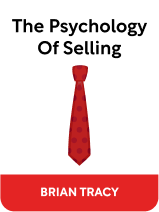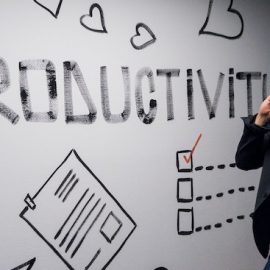

This article is an excerpt from the Shortform book guide to "The Psychology Of Selling" by Brian Tracy. Shortform has the world's best summaries and analyses of books you should be reading.
Like this article? Sign up for a free trial here .
What’s the best way to close a sales pitch? How can a strong closing help you increase your chances of clinching the deal?
When crafting their pitch, beginner salespeople often make the mistake of neglecting the close. But a brilliant sales pitch is worth nothing if it is not followed by a strong closing.
Here are some tips on how to close a sales pitch effectively.
Tip 1: Watch for the Readiness
By the time you arrive at the close of your pitch, you should have prepared your prospect to be receptive to your request for the sale by setting up her expectations with a strong opening and by increasing her desire with a focus on the benefits of whatever you are selling.
It’s important to close as soon as your prospect is ready. Watch for this readiness as you go through your pitch. Often, a salesperson will actually delay—and sometimes lose—a sale because she doesn’t ask for it soon enough based on her customer’s cues.
Tip 2: Close With a Hot-Button Issue
Now that you’ve had an open conversation, you should have identified the hot-button issue: the issue that your customer cares about over every other issue. If your previous questions haven’t revealed the hot-button issue by this point, you can very often discover it by asking a hypothetical question along the lines of, “If you were going to buy this product now or at any time in the future, what would cause you to do so?” Making it hypothetical often inspires the customer to reveal what would convince her to move forward with the sale.
Once you know her hot-button issue, continue to press it, over and over. Make the entire decision revolve around that issue.
Tip 3: Assume the Sale
As soon as you’ve identified your prospect’s hot-button issue and gotten her to agree that your product addresses it, assume she agrees to the sale and act accordingly. In other words, force your customer to stop the sale from going through rather than wait for her to ask for the sale to happen. For example, after she agrees that your product can help her double her sales, take out an order sheet and start filling it out. Often, a prospect will not stop you: They agree with your assessment and just need a little push to keep the momentum going.
Tip 4: Use a Trial Close
With the trial close method, check in with your prospect at several points in your presentation to make sure you are on the right track and to test for your prospect’s readiness to close. For example, you might ask, “Does this make sense so far?” or “Would this improve your current system?” You can refer to a specific benefit to make it even stronger: “This copy machine will make 140 copies a minute. Would this be important to you?”
The benefit of the trial close is that it allows you to adjust your presentation in real time if your prospect indicates she isn’t connecting to the particular feature you’re discussing. For example, if you ask, “Would producing 140 copies a minute be important to you?” and she tells you that it wouldn’t because her department never makes that many copies at a time, then you can pivot to highlight a different feature with a different benefit.
Tip 5: Differentiate Between Tangible and Intangible Sales
You will need different closing methods depending on the type of product or service you’re selling. In general, tangible products require different closes than intangible products, and each type of product works on a different closing schedule. Here are some guidelines on how to close a sales pitch for tangible vs intangible products:
Tangible products, like clothing or furniture, are faster sales, and you can expect in many cases to close a sale after your first meeting. At the end of a meeting about a tangible product, you are well within your rights to (politely) point out to your prospect that by now she knows everything there is to know about the product and there’s no reason to delay making a decision. This works in your favor because when a customer asks for more time to “think it over,” she typically forgets about the sale fairly quickly, loses her desire to make the purchase, and you’ve generally lost the opportunity.
Intangible products, like investment opportunities, often involve more of a long-term commitment from the prospect and may require several meetings—the first to establish a relationship and gather information as to what your prospect needs, and the next to come back with additional information and even a specific proposal.

———End of Preview———
Like what you just read? Read the rest of the world's best book summary and analysis of Brian Tracy's "The Psychology Of Selling" at Shortform .
Here's what you'll find in our full The Psychology Of Selling summary :
- How to dramatically increase your sales
- How to know what your customers are thinking
- Brian Tracy's 10 guidelines for success






